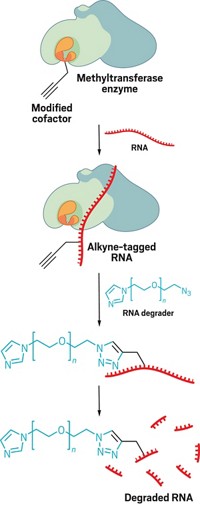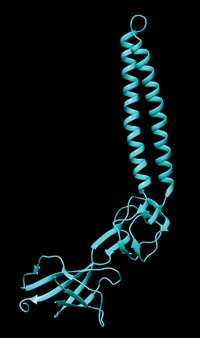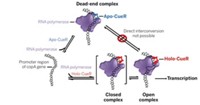Advertisement
Grab your lab coat. Let's get started
Welcome!
Welcome!
Create an account below to get 6 C&EN articles per month, receive newsletters and more - all free.
It seems this is your first time logging in online. Please enter the following information to continue.
As an ACS member you automatically get access to this site. All we need is few more details to create your reading experience.
Not you? Sign in with a different account.
Not you? Sign in with a different account.
ERROR 1
ERROR 1
ERROR 2
ERROR 2
ERROR 2
ERROR 2
ERROR 2
Password and Confirm password must match.
If you have an ACS member number, please enter it here so we can link this account to your membership. (optional)
ERROR 2
ACS values your privacy. By submitting your information, you are gaining access to C&EN and subscribing to our weekly newsletter. We use the information you provide to make your reading experience better, and we will never sell your data to third party members.
Biological Chemistry
Bacteria Chew Up Atrazine
Synthetic Biology: Engineered E. coli seek and destroy herbicide
by Celia Henry Arnaud
May 17, 2010
| A version of this story appeared in
Volume 88, Issue 20
Chemists at Emory University have reprogrammed bacteria to seek and degrade the herbicide atrazine (Nat. Chem. Biol., DOI: 10.1038/nchembio.369). Such bacteria could prove useful for bioremediation of atrazine, which is toxic to animals and possibly humans as well.
Justin P. Gallivan, Joy Sinha, and Samuel J. Reyes engineer Escherichia coli to produce RNA molecules called riboswitches that change conformation when they bind atrazine. The switching activates the translation of a protein called CheZ that allows the bacteria to move and chase atrazine in their surroundings. “The riboswitch acts like a molecular brake,” Gallivan says. “When you add atrazine, you release the brake and the cells can move.”
The usual way to find riboswitches is to start with an RNA that tightly binds the target. “You can imagine some RNAs that might bind atrazine very well but be incapable of undergoing a conformational change that allows you to get a change in gene expression,” Gallivan says. He and his coworkers screened a library of RNAs with moderate affinity for atrazine to find the best riboswitch. “By doing in vivo selection, we can find switches that work the way we intend,” he says.
The team also rewired the bacteria to produce an enzyme that converts atrazine to hydroxyatrazine, which does not act as an herbicide and is not as toxic.
The riboswitch binds atrazine but not its degradation product. “If you’re chasing something nasty in the environment, you want to break it down and keep looking for more of the nasty thing rather than get hung up on the product,” Gallivan says.
“This work represents a clever use of riboswitches to engineer E. coli cells to show a chemotactic response to the herbicide atrazine,” says Lawrence P. Wackett, a biochemist at the University of Minnesota, who identified the enzymes that degrade atrazine. “It is currently unclear what advantage this offers in bioremediation applications, but it may be useful as a methodology for selecting atrazine-metabolizing clones with differential activity.”






Join the conversation
Contact the reporter
Submit a Letter to the Editor for publication
Engage with us on Twitter